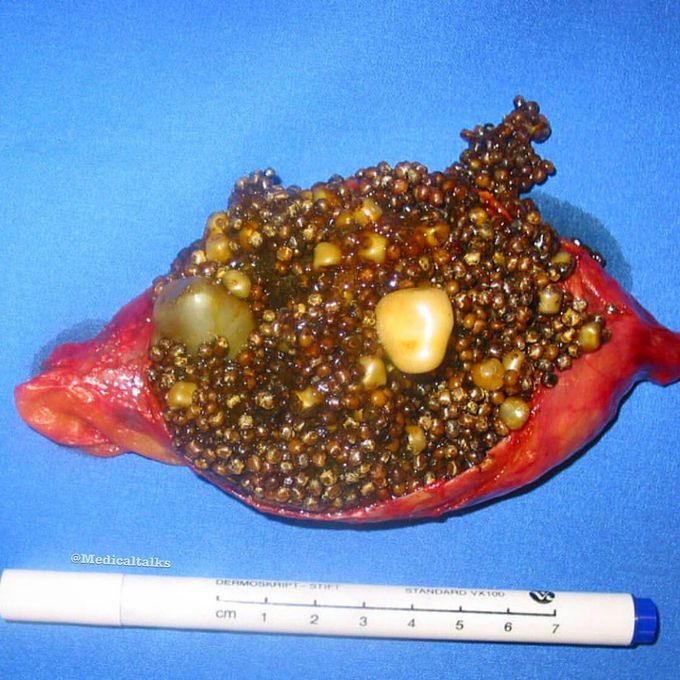


Cholelithiasis
Excised gallbladder opened to show hundreds of cholesterol gallstones (cholelithiasis)!! Cholelithiasis involves the presence of gallstones, which are concretions that form in the biliary tract, usually in the gallbladder. The disease tends to be asymptomatic is the majority of cases, with the most common presenting symptom being right upper quadrant (biliary colic) or epigastric abdominal pain or discomfort, especially after a fat-rich meal. Other symptoms include belching, bloating, flatulence, heartburn, and nausea. Migration of a gallstone into the opening of the cystic duct may block the outflow of bile during gallbladder contraction. The resulting increase in gallbladder wall tension produces the characteristic type of pain we know as biliary colic. Cystic duct obstruction, if it persists for more than a few hours, may lead to acute gallbladder inflammation (acute cholecystitis). Choledocholithiasis on the other hand, refers to the presence of gallstones in the common bile duct. Usually, this occurs when a gallstone successfully passes further all the way from gallbladder to the cystic duct and into the common bile duct. Cholesterol stones account for > 85% of gallstones, and for them to actually form, bile must be supersaturated with cholesterol, with nucleation and stone growth. See, normally, water-insoluble cholesterol is made water soluble by combining with bile salts and lecithin to form mixed micelles. Supersaturation of bile with cholesterol most commonly results from excessive cholesterol secretion but may result from a decrease in bile salt secretion or in lecithin secretion. Thus, the excess cholesterol must precipitate from solution as solid microcrystals, which aggregates and grows. Either open or laparoscopic cholecystectomy for symptomatic stones is the treatment of choice! Photo by Dr. Karl-Heinz Günther
I had the same problem with complicate surgery to get lateral tearing of CBD and right hepatic artery cut off
Hemodynamic stimuli&nonhemodynamic stimuliEffects of sugar on teeth



